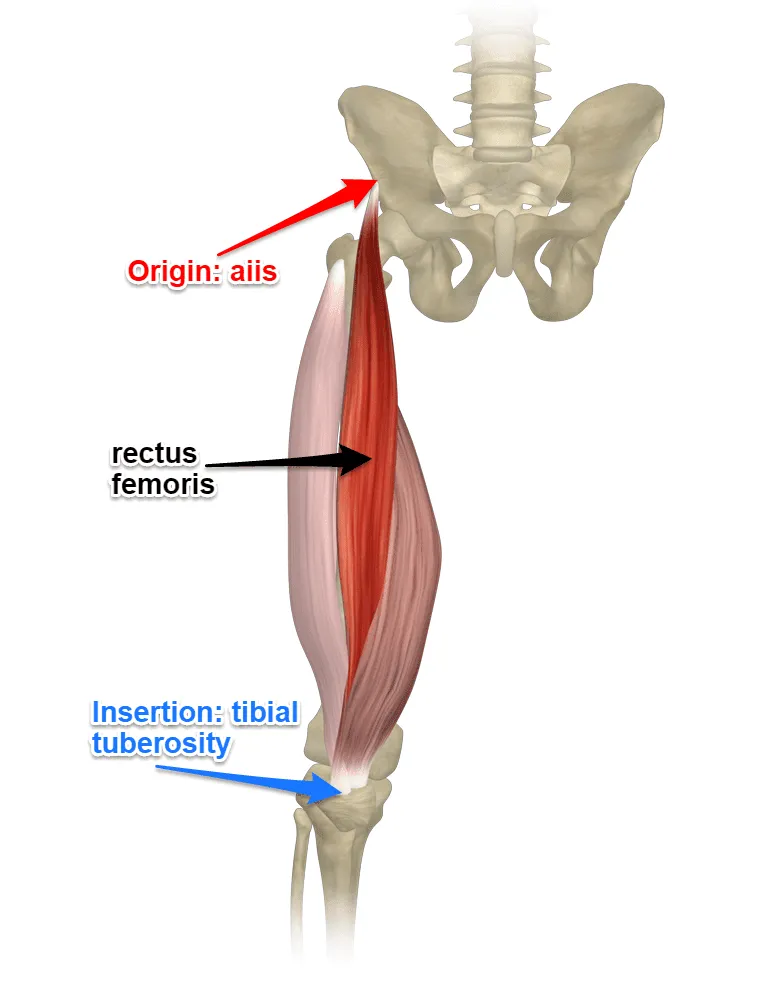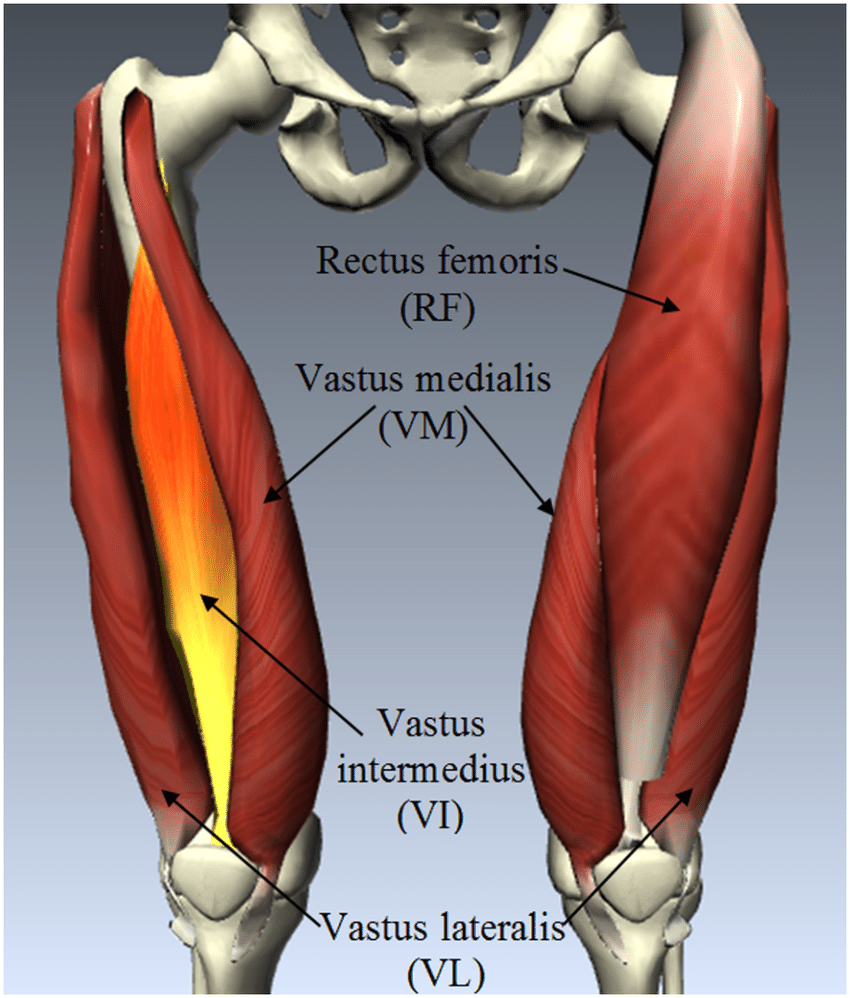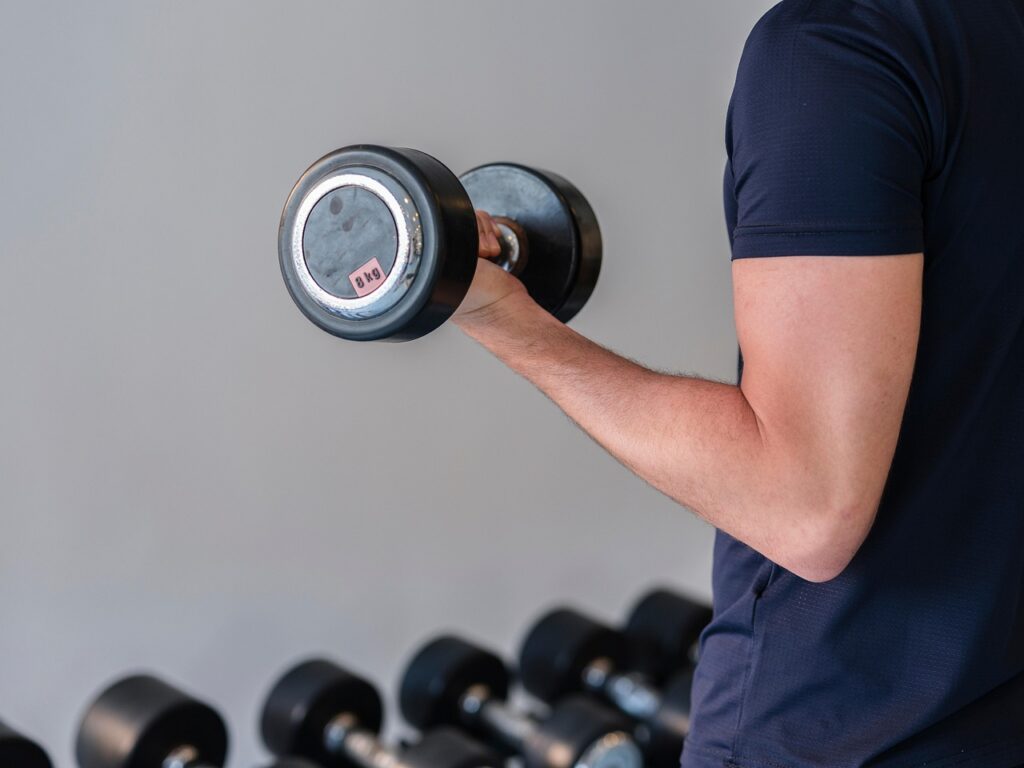
Trigger Points in the Quads: What They Are and How to Release Them
If you stretch your quads and can’t seem to get anywhere, there may be more going on beneath the surface.
In this article, I break down what quad trigger points are, where they’re found, what causes them, and most importantly—how to get rid of them.
If you just came for the trigger point techniques, click here and jump down!
Let’s get to it!
What Are Trigger Points in the Quads?
Trigger points, sometimes called muscle knots, are sensitive areas in muscle tissue that feel tight and can be tender to the touch.
When you press on a trigger point, it can cause a burning sensation, general pain or radiate to other areas.
In the quadriceps, these trigger points often develop from overuse, prolonged sitting, or imbalances in the muscles.
This muscle group is made up of four muscles:
- Rectus Femoris (runs down the front of the thigh and crosses both the hip and knee)
- Vastus Lateralis (outer thigh)
- Vastus Medialis (inner thigh)
- Vastus Intermedius (beneath the rectus femoris)
These muscles all come together at the kneecap, which means tightness and trigger points in your quads can pull on the knee and cause pain or dysfunction there, even if the knee itself is perfectly healthy.
BTW – The knee is often impacted by hamstring tightness too. Read about that here.
Common Quad Trigger Points and Pain Referral Patterns
Just like getting trigger points in the entire leg, each of the four quad muscles can develop specific trigger points. Check them out below:
Rectus Femoris Trigger Points:

These cause pain in the middle of the front thigh and can extend down to the front of the knee or below the knee on the patellar tendon.
The trigger point is usually located in the middle third of the muscle, slightly off-center.
Vastus Lateralis Trigger Points:

This muscle is often misinterpreted as IT band pain because they are so close together.
It can create aches on the side of your leg and pain in your outer knee.
Trigger points are often found in the upper half of the outer thigh.
Vastus Medialis Trigger Points:
These are usually located just above the inner side of the kneecap and can cause localized knee pain or a feeling of weakness during squatting or stair climbing.
Vastus Intermedius Trigger Points:
These are deep and hard to isolate, but they often contribute to a general achy or heavy sensation in the thigh.
If you are trigger pointing or foam rolling the middle of your thigh, then you will be putting pressure on your Vastus Intermedius.
If you’ve ever had knee pain that doesn’t show up on imaging or doesn’t respond to standard treatment, quad trigger points—especially in the rectus femoris and vastus medialis—could be the underlying cause.
And that is what we are going over below! But first, more on what causes quad trigger points.
What Causes Quad Trigger Points?

Trigger points usually form when a muscle is overused, under-recovered, or held in a shortened position for long periods. Here are some of the most common reasons quads develop trigger points:
Repetitive movements
This can include running, cycling, squatting or any repetitive motion that puts strain on the legs.
Sitting for long hours
This keeps the quads in an un-lengthened position for too long. This leads to muscle imbalances, and weakness in the quads which will turn into stiffness and trigger points if untreated.

Muscle imbalances
Weak glutes or hamstrings that will force the quads to take on more work than they would like to!
Healthy muscles share the required workload properly and when issues arise in one area, others will be forced to compensate.
Lack of recovery
from hard training sessions.
Over time, these stressors create tight knots in the muscle fibers that restrict blood flow, limit mobility, and refer pain to nearby joints, all while making the muscle more stiff and less efficient.
How to Release Quad Trigger Points
Fortunately, you can treat most quad trigger points at home using manual pressure, trigger point balls, or a foam roller.
Let’s go over them one by one.
Manual Trigger Point Release For Quads
The best way I have found to do this is by using my thumbs or elbows.
I start by putting my leg up on a ledge or short counter and leaning forward to get close to my quad area.
Then I go up and down the muscles looking for knots to apply pressure to.
I like going over it from side to side and feeling the muscle relax under the pressure.
You can do this manual massage for as long as you want, as long as it isn’t too painful and you don’t experience any bruising.
If you do begin bruising or notice it a day later, it means you were using too much pressure and you should back off next time.
Trigger Point Your Quads
In the video below I show how I use a soft ball to trigger point my quads.
In it, I discuss these techniques:
Rolling Along The Belly
This is when you roll up and down along each muscle to find the tightest areas in each band of muscles.
It feels great depending on how much pressure you use and it can also help find the tightest areas to do a full 30 second trigger point on.
This is when you move side to side across the muscle like you’re strumming a guitar.
Rolling Across The Belly
It forces the muscle to be more pliable.
Active Release Technique
Finally, in the video you saw that I bend my leg to force my quad into a stretched position. This is an active release technique for the quad muscles.
The idea behind it is kind of like kneading dough. You add pressure and stretch at the same time to remove tough spots and lengthen the muscle.
So, all you have to do is find a trigger point, add pressure, and stretch the muscle.
Then reset and repeat as you need.
Foam Rolling the Quads
Foam rolling can help spread out the force you’re putting on your leg, which is important if trigger pointing is too painful when you first start fixing your body.
All you have to do is:
- Lie face down and place a foam roller under one thigh.
- Slowly roll from your hip down to just above your knee.
- Pause on any particularly tender areas for 20–30 seconds.
- Roll for one to two minutes on each leg.
You can use the same techniques from the trigger point section above such as:
- Rolling with the belly
- Rolling across the belly
- Pausing on trigger points
- Active release technique
Watch this video to see it all in action and for the breakdown on foam rolling, check out my article on How To Foam Roll Your Quads The Right Way.
Quad Trigger Points and Knee Pain: What’s the Connection?
One of the most frustrating aspects of quad trigger points is how they create knee pain.
That’s why whenever I have knee pain, or somebody I know has knee pain, I work through some quad stretches and some trigger point therapy for the quads.
As I go over in my quad related knee pain article, the knee is continuous with the quad tendon.
This means that if the quad is tight, it puts the kneecap in tension and makes it rub against surrounding tissues, causing pain.
This type of referred pain is common with trigger points and can trick you into thinking there’s something wrong with the joint.
If stretching and strengthening your quads hasn’t helped your knee pain, it’s worth exploring the possibility that trigger points in the thigh are the real issue.
What To Do Next
Trigger points in the quadriceps are an often-overlooked source of thigh and knee pain.
Now that you know how to find and treat them, you can relieve pain, restore function, and get back to moving freely.
Use this guide along with the quad stretch guide and foam rolling guide to fix your quads and use my ultimate guides to fix the rest of your body!
Be consistent, go slowly, and combine techniques for the most benefit. Your legs will thank you.
Good Luck!
-Nick